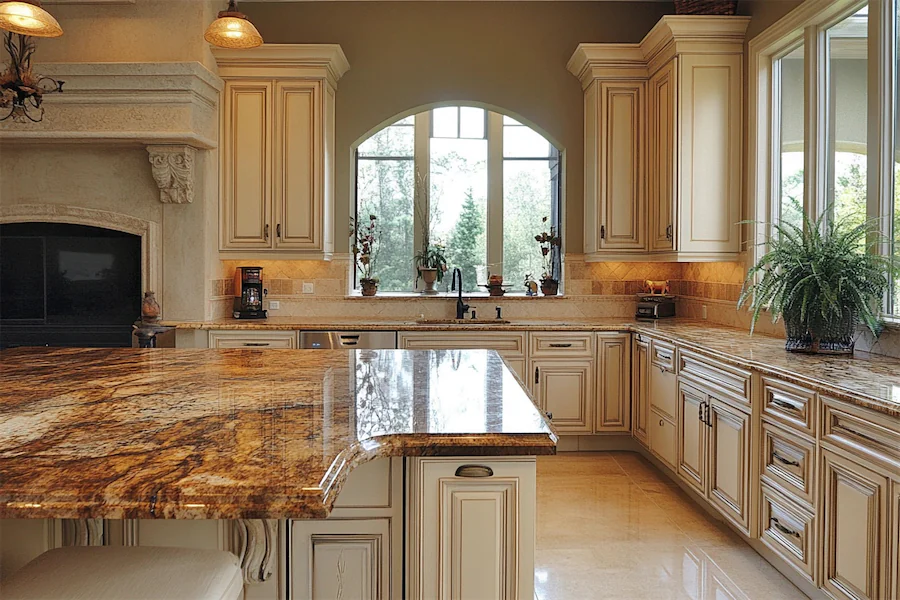Designing a warm-toned kitchen involves incorporating colors and materials that evoke a sense of comfort and hospitality. Here’s an overview to guide you through the key aspects of warm-toned kitchen design:
Introduction to Warm-Toned Kitchens
Warm-toned kitchens utilize a palette of colors such as earthy browns, soft yellows, terracotta, and warm grays to create an inviting atmosphere. These hues can make the kitchen feel cozy and welcoming, enhancing the overall ambiance of the home.
Key Features of Warm-Toned Kitchens
- Earthy Color Palettes: Incorporate colors inspired by nature, such as terracotta, caramel, and olive green, to infuse your kitchen with natural warmth.
- Natural Materials: Utilize wood finishes, stone countertops, and clay tiles to add texture and warmth to the space. Materials like reclaimed wood and natural stone contribute to an earthy kitchen design.
- Warm Lighting: Implement lighting solutions that emit a soft, warm glow, such as pendant lights with warm-toned bulbs or under-cabinet lighting, to enhance the inviting atmosphere.
- Textural Elements: Incorporate textured materials like woven baskets, rustic wood beams, or stone backsplashes to add depth and interest to the kitchen design.
Applications of Warm-Toned Kitchen Design
- Cabinetry: Choose cabinets in warm wood tones or painted in warm hues to set the foundation for the kitchen’s color scheme. Warm white colors can also provide coziness to your space.
- Countertops and Backsplashes: Select materials like warm-toned granite, quartz, or terracotta tiles for countertops and backsplashes to complement the overall design.
- Accessories and Decor: Incorporate warm-colored accessories, such as copper cookware, wooden utensils, or warm-toned textiles, to reinforce the theme.
Considerations When Designing a Warm-Toned Kitchen
- Balance: Ensure a harmonious balance between warm tones and other elements to prevent the space from feeling overwhelming. Incorporate neutral colors or cooler accents to achieve visual balance.
- Lighting: Adequate lighting is essential to highlight the warm tones and prevent the space from appearing dim. Consider natural light sources and complement them with appropriate artificial lighting.
- Personal Style: Incorporate elements that reflect your personal style to make the space uniquely yours while maintaining the warm and inviting atmosphere.
Conclusion
A warm-toned kitchen creates a cozy and inviting environment that serves as the heart of the home. By thoughtfully selecting colors, materials, and lighting, you can design a space that is both functional and welcoming, reflecting your personal style and enhancing the overall ambiance of your home.
